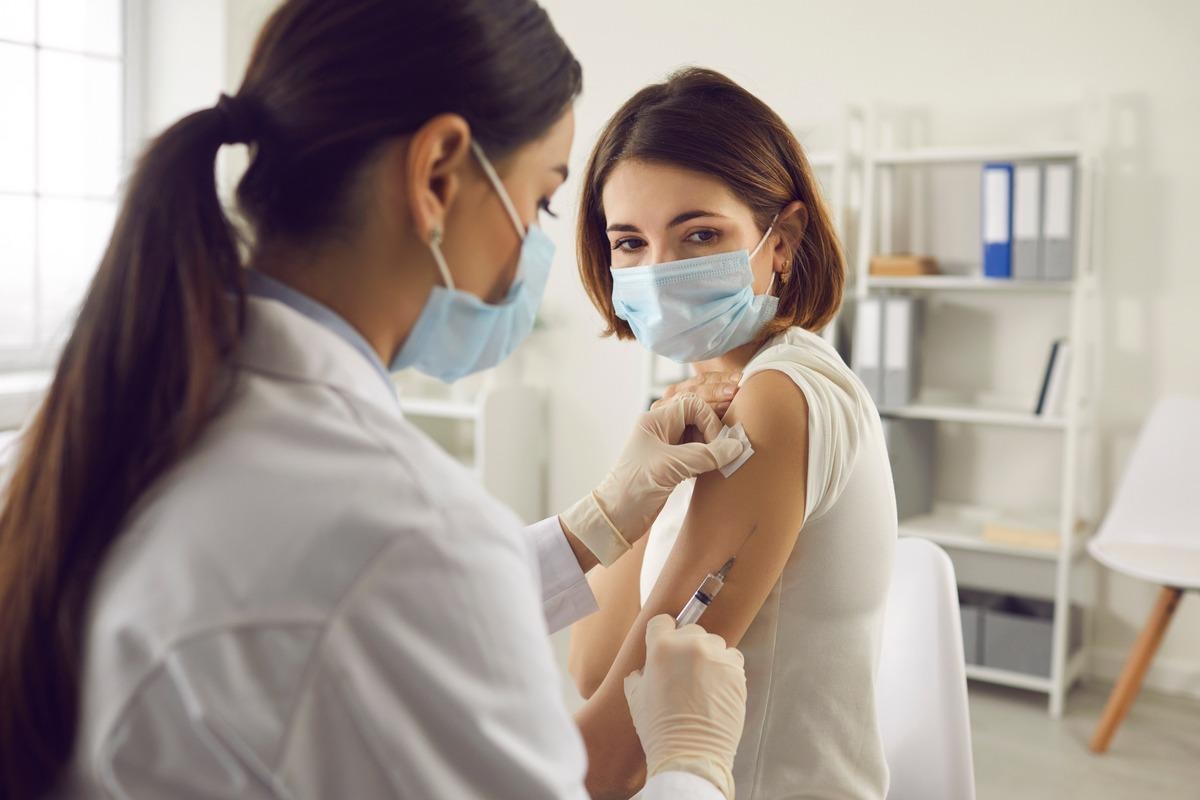A new medRxiv * preprint study pending peer review found the Pfizer BioNTech vaccine was correlated with a 30% lower risk of COVID-19 infection and hospitalization than the AstraZeneca two-dose vaccines. The results were robust for at least six months when Delta was the dominant strain and showed that there were no differences in immunity degradation between the two vaccines.
Study: Comparative effectiveness of the vaccine BNT162b2 vs. ChAdOx1 against Covid-19. Image source: Studio Romantic / Shutterstock
Led by Junqing Xie of Oxford University in the UK, the results suggest that Pfizer-BioNTech’s mRNA COVID-19 vaccines provide additional protection against Coronavirus 2 (SARS-CoV-2) Severe Acute Respiratory Syndrome (SARS-CoV-2) offer as AstraZeneca. This can help promote mRNA vaccines for boosters, and encourage mixed and combination vaccines.
Data collection
The researchers collected participant data from the UK BioBank from 2007 to 2010, which included 500,000 people between the ages of 40 and 69 from 2007 to 2010. The information included socio-demographic, lifestyle and health-related factors. The researchers focused on the people living in England, as vaccination dates for Scotland and Wales were not yet available at the time. This included participants who received a single-dose COVID-19 vaccine from January 11, 2021 to February 28, 2021 or a two-dose vaccine from March 22 to May 9, 2021.
Approximately 70,097 adults aged 50 and over received the first dose of Pfizer BioNTech. A total of 98,551 people chose AstraZeneca’s COVID-19 vaccine. Approximately 67,813 and 89,030 people received two doses of Pfizer-BioNTech and AstraZeneca, respectively.
Individuals who received the Pfizer BioNTech vaccine were slightly older, with a mean age of 71.35, than AstraZeneca vaccine recipients, who averaged 71.06 years of age.b The majority of participants were male and white.
The main differences between the vaccine groups were the timing of vaccination and socio-economic factors such as income. Of the approximately 14,000 people who received a dose of the Pfizer BioNTech vaccine, 200 people later tested positive for COVID-19 infection. This corresponds to an incidence rate of 13.7 per 1,000 population. Of the roughly 20,000 people who received an AstraZeneca dose, 261 people tested positive for SARS-CoV-2, giving an incidence rate of 12.6 per 1,000 people.
Further adjustments to the analysis (hazard ratio changed to 0.72), however, favored the Pfizer BioNTech vaccine as the best protection against SARS-CoV-2. The risk of hospitalization was similar to the risk of infection for both vaccines.
results
Approximately 1,361 of 34,991 people who received two doses of Pfizer-BioNTech tested positive for SARS-CoV-2. In contrast, 2,497 out of 44,084 people tested positive after two doses of the AstraZeneca vaccine. The results showed that the Pfizer BioNTech vaccine was the best at protecting against infection and hospitalization.
Unadjusted and adjusted HR were almost identical, which favored BNT162b2. Hospitalization rates for Covid-19 remained low in both cohorts, but higher for ChAdOx1 (IR: 4.55 per 1,000 person-years) compared to BNT162b2 recipients (IR: 3.47 per 1,000 person-years), with an adjusted HR of 0, 71 was in favor of BNT162b2. “Explained the researchers.
Trends in COVID-19 infections and hospital stays
From January to March 2021, the rate of COVID-19 infection showed an initial increase after the first dose before leveling off 14 weeks after vaccination.
Although there was an increase in infections 12 weeks after the second dose from June to October 2021. Separately, the results showed that the risk of COVID-19 infection was consistently lower in people who received two doses of Pfizer-BioNTech compared to two doses of AstraZeneca. The infection and hospitalization rate was constant for at least 6 months.
limitations
Several limitations to the study may have affected the ultimate results. For example, the differences in test rates between vaccinated and unvaccinated people exposed to SARS-CoV-2 could have influenced the observational data.
Participant personal data was collected a decade ago and may have changed since then. Although the researchers argue that all participants were middle-aged or older, they expect minimal changes in socio-economic status and education. In addition, other variables that were not taken into account could alter the relationship between infection and possibly underestimate the comparative effectiveness of the vaccine.
*Important NOTE
medRxiv publishes preliminary scientific reports that are not peer-reviewed and should therefore not be considered conclusive, that guide clinical practice / health-related behavior or are treated as established information.

